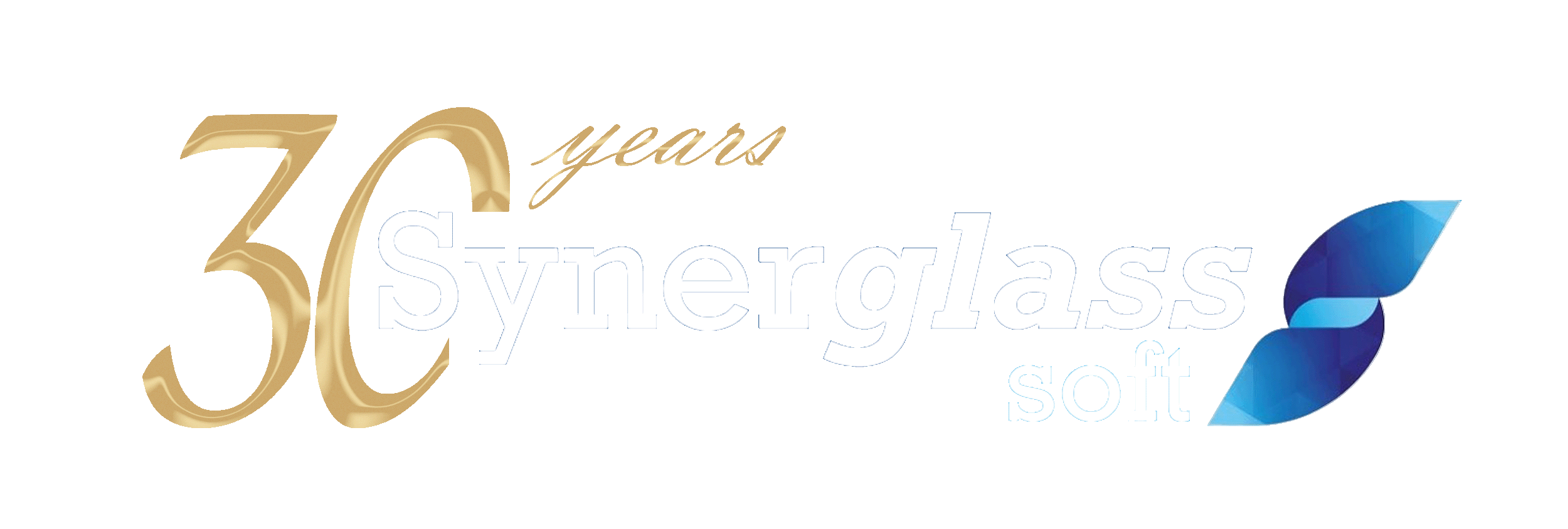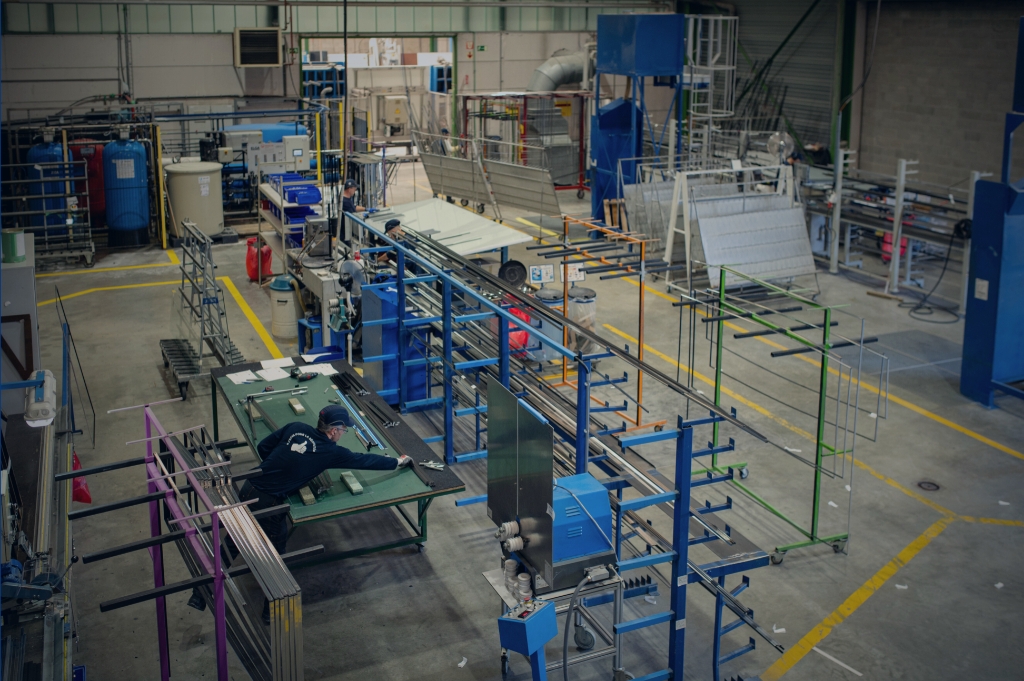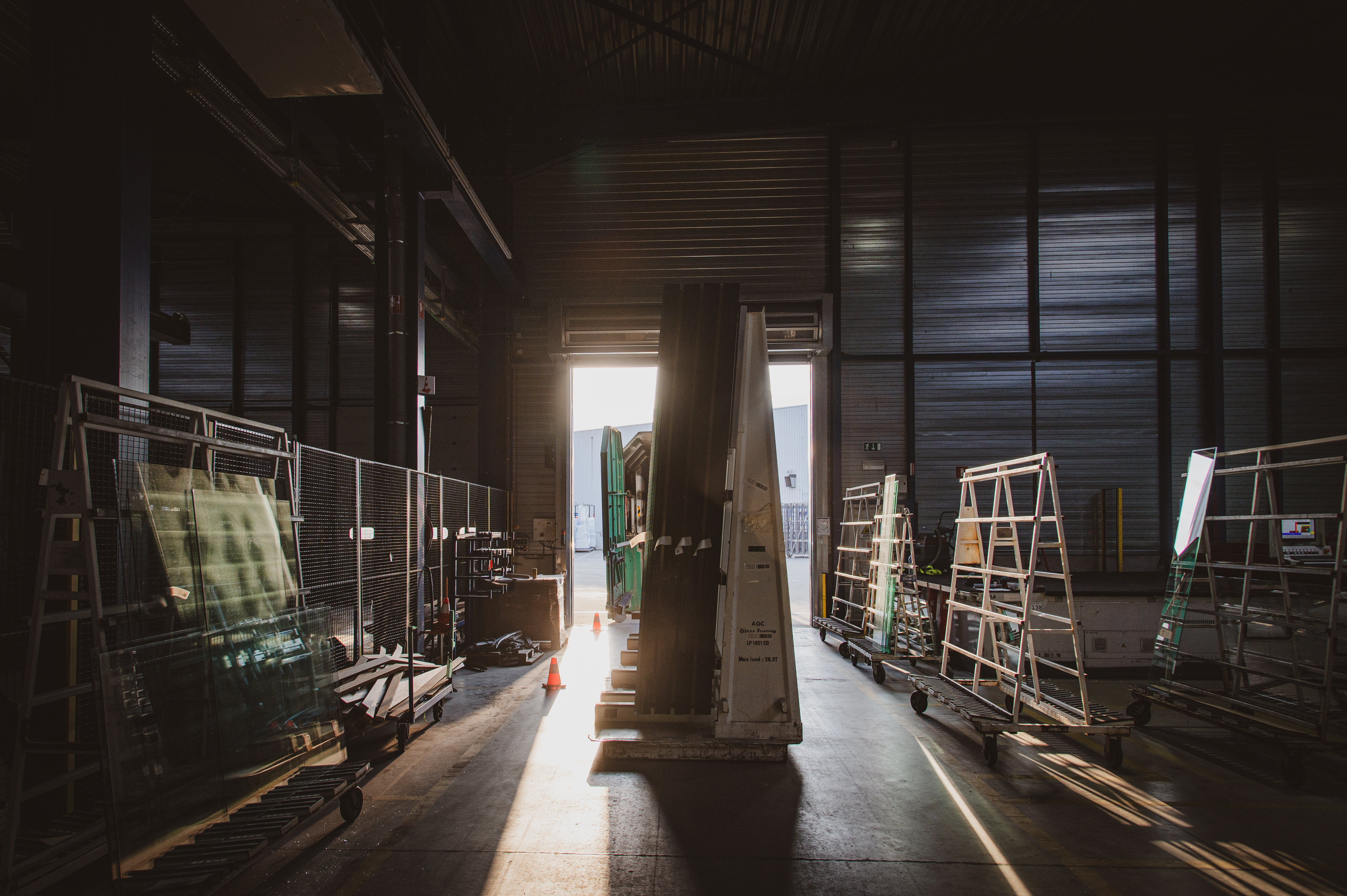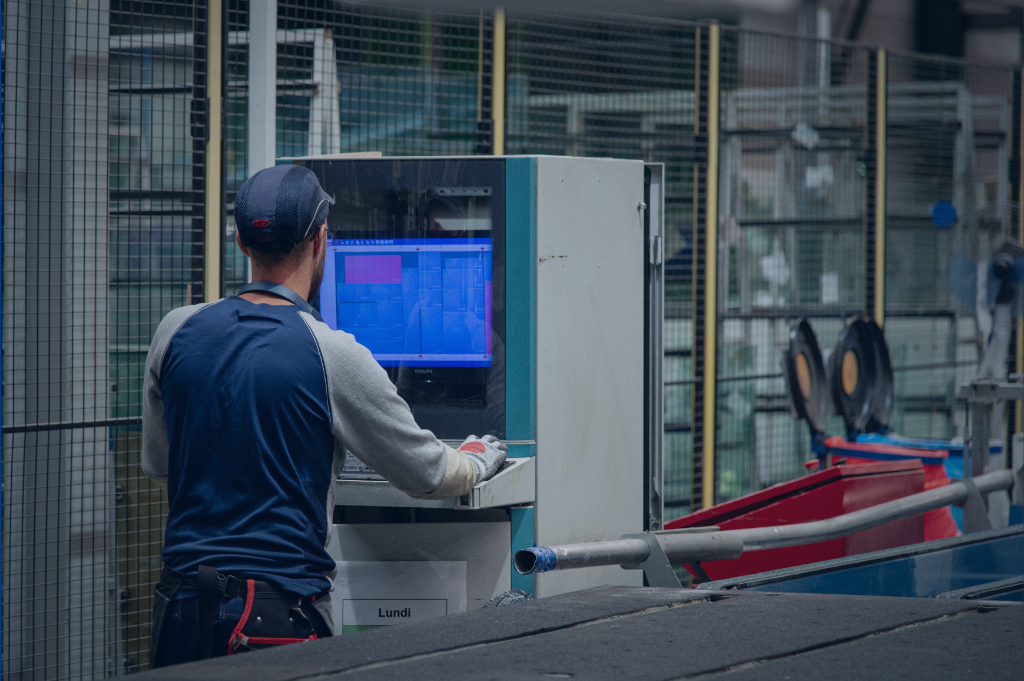Imagine a busy glass processing facility. Glasses are cut, tempered, and laminated, with each one going to a specific project. Deadlines are tight, and if one machine breaks down or we run out of supplies, there will be delays in deliveries. In this fast-paced environment, production monitoring is not just important – it is a critical safeguard for degraded mode operations, the fallback state when things don’t go as planned. How can you make sure that everything runs smoothly at every stage of production, without any costly delays or quality issues? What if you had a single tool to oversee your entire operation – from production workflows to stock levels – while also predicting maintenance needs and optimizing logistics?
That is where ERP (Enterprise Resource Planning) systems come in. These systems offer a central hub to manage all your production processes, from tracking raw materials and machine performance to quality control. For glass processors, software solutions like Symbiose by Synerglass-Soft address the specific challenges of your industry, ensuring seamless coordination between departments and providing control and visibility across the entire workflow.
In this article, you will learn how ERP systems specifically tailored for glass processors can revolutionize production monitoring. We will see how these tools can make your operations more efficient and help you avoid wasting time and resources. We will explore the unique challenges glass processors face, how ERP systems address these pain points, and actionable steps to help you evaluate if ERP is the right solution for your business.
The top challenges in glass production monitoring – and how to overcome them
Glass processing isn’t like other manufacturing industries. The complex nature of glass production means there are challenges that require solutions that are specifically designed for this process.
Complex production stages require coordination
Glass processing is a precise and multi-stage operation, where each step builds on the previous one. For instance:
- Cutting: Raw glass sheets are sized to exact dimensions based on the order.
- Processing/ Edging: Edges are polished or ground, either for safety (for example to prevent sharp edges, but also to improve structural integrity and facilitate further processing) or aesthetics (to create a clean, finished look).
- Tempering: Glass is heated and rapidly cooled to strengthen it, making it more resistant to impact and temperature variations.
- Laminating: Interlayers are added between glass panes for enhanced safety, soundproofing, or UV protection.
- Insulated glass assembly: The processed glass sheets are combined into insulated units, such as double glazing (two panes) or triple glazing (three panes). Spacers are added between the panes, and the unit is filled with air or gas before being sealed for optimal thermal and acoustic performance.
Each stage depends on the previous one. A delay in cutting impacts every step that follows. If cutting is delayed because there’s a backlog or a shortage of materials, it can disrupt the entire production process. It can be really difficult to identify where these bottlenecks occur, especially in a busy production environment, without the right tools. Without clear visibility, it’s almost impossible to identify and resolve bottlenecks.
Tackling the complexities of tailored glass processing
The glass processing industry thrives on fulfilling highly specific client demands, where nearly no two orders are alike. These unique requirements span a wide range of applications, for example:
- Shower doors with ground glass: Produced through intricate sandblasting or etching techniques to create bespoke patterns or effects.
- Triple-glazed units for energy-efficient buildings: Crafted with precise layering of glass, spacers, and coatings to meet thermal insulation standards.
- Decorative glass for interiors: Customized with printed designs, textured surfaces, or colored films for unique aesthetic impact.
Unlike mass-production industries, meeting these demands means dealing with complex challenges:
- Dynamic production schedules: Adjusting timelines to ensure that one-of-a-kind orders fit smoothly into an already complex production workflow.
- Specialized inventory management: Tracking unique materials such as reflective coatings or Georgian bars, which may not always be stocked in large quantities.
- Uncompromising quality assurance: Ensuring each product meets exact specifications.
This environment is all about being able to adapt and be precise, which is why we need to use the right tools and strategies to make sure everything runs smoothly and continues to meet your customers’ expectations.
Quality assurance standards
In the glass processing industry, quality is non-negotiable. Clients expect products to meet high standards, whether it’s safety glass for building facades, tempered glass for car windows, or insulated glass units for energy efficiency. A single defect – such as a scratched surface, a chipped corner, or a break during handling – can make the product unusable. In such cases, the glass must be scrapped, and production must start over, leading to wasted time, materials, and resources.
To manage defects efficiently, software systems like Symbiose provide structured defect tracking and resolution workflows. When a defective item is identified, operators can declare the defect directly in the system, specifying the type of issue (e.g., scratched, broken glass). These defects are then grouped for processing, allowing production teams to determine the best corrective action.
Depending on the situation, a defect can be reproduced within the production workflow – with the same order number – or marked as a missing item, generating a replacement order if necessary. This ensures that defective items are correctly tracked and reprocessed without disrupting the production schedule.
By integrating defect management into production monitoring, ERP systems help reduce waste, improve tracking, and provide better visibility into recurring quality issues, allowing glass processors to continuously improve their production processes.
How ERP systems simplify coordination across complex glass production stages
A powerful ERP system brings all the parts of your operations together, giving you real-time data and insights to help you deal with the above challenges. Here is how ERP systems can help with industry-specific issues:
Centralized production data for real-time insights
An ERP system creates a unified view of production, so you know exactly:
- What is in progress: Track each order’s status across every stage of production, from cutting, processing, insulated glass (IG) line, laminating, to loading, and data entry.
- What is delayed: Identify bottlenecks immediately, such as a cutting table operating at reduced speed.
- What is coming next: Anticipate upcoming workloads and allocate resources efficiently.
For example, if your tempering furnace falls behind schedule, the system will highlight the overdue tasks, then it is up to your team to review and adjust the schedule to keep production on track.
Enhanced scheduling for specific orders
With ERP systems like Symbiose, you can adjust schedules to fit in specific orders without affecting other operations.
- The system helps prioritize tasks based on deadlines, machine availability, and material stock, sending alerts when adjustments may be needed to keep things on track.
- It spots any potential issues, such as insufficient spacer bars for insulated units, and suggests solutions.
Keeping inventory organized automatically
Inventory issues are a common source of delays. An ERP tracks every piece of material, from raw sheets to finishing supplies, ensuring:
- Stock levels are updated, and the system alerts you when critical items like coatings or sealants are running low.
- Wastage is minimized by tracking offcuts and reusable materials.
For example, the system might flag that a batch of low-iron glass needed for a project is running low and automatically suggest reordering before it affects production.
Optimizing production and reducing downtime with an ERP
Minimizing production interruptions is crucial in the glass industry. An ERP enhances production tracking and scheduling by centralizing data and improving operational management. For example:
- Optimized scheduling: The production planning system structures the sequence of operations based on sorting constraints and production deadlines.
- Real-time process tracking: Each production station receives alerts with updates on work progress, reducing bottlenecks and improving coordination.
- Downtime management: The ERP helps analyze production stoppages and better organize maintenance during low-activity periods.
With greater visibility and control, businesses can reduce unexpected delays and maximize production efficiency.
Ensuring quality in glass processing: the role of ERP systems
ERPs allow you to embed quality checks directly into the production process. For example:
- If a laminated pane fails quality control, the ERP traces its production history, identifying whether the issue arose during cutting, interlayer placement, or lamination.
- This data helps adjust processes immediately, preventing repeated defects.
What makes production monitoring essential today?
In an industry where precision and time are everything, monitoring production is not an option – it is a competitive advantage. An ERP system is the backbone of this monitoring, transforming how glass processors manage their operations. It ensures that:
- Orders meet deadlines: Preventing delays that could harm client relationships.
- Resources are optimized: Reducing waste and keeping costs under control.
- Quality remains consistent: Meeting the high standards your clients expect for safety and appearance.
As you deal with more and more complex workflows in glass processing, being able to monitor every stage of production in real-time is not only helpful, it is essential.
The challenges you face are complex, but the right technology can make them manageable.
Take control of your production monitoring
Take the next step and give yourself the efficiency and control you need. If you implement an ERP system that’s tailored for glass processing, you can streamline your operations and improve overall production.
Improving production monitoring starts with asking the right questions:
- Do you know the status of every order on your production line right now?
- Are you confident that your inventory levels can meet upcoming demand?
- Can you pinpoint the exact cause of production delays or quality defects when they occur?
If your answers leave you uncertain, it might be time to explore how an ERP system tailored for glass processors could bring clarity and control to your operations.
If you are ready to take control of your production monitoring, plan a demo today. Contact us at sales@synerglass-soft.com, and take the first step toward streamlined operations and improved efficiency.




